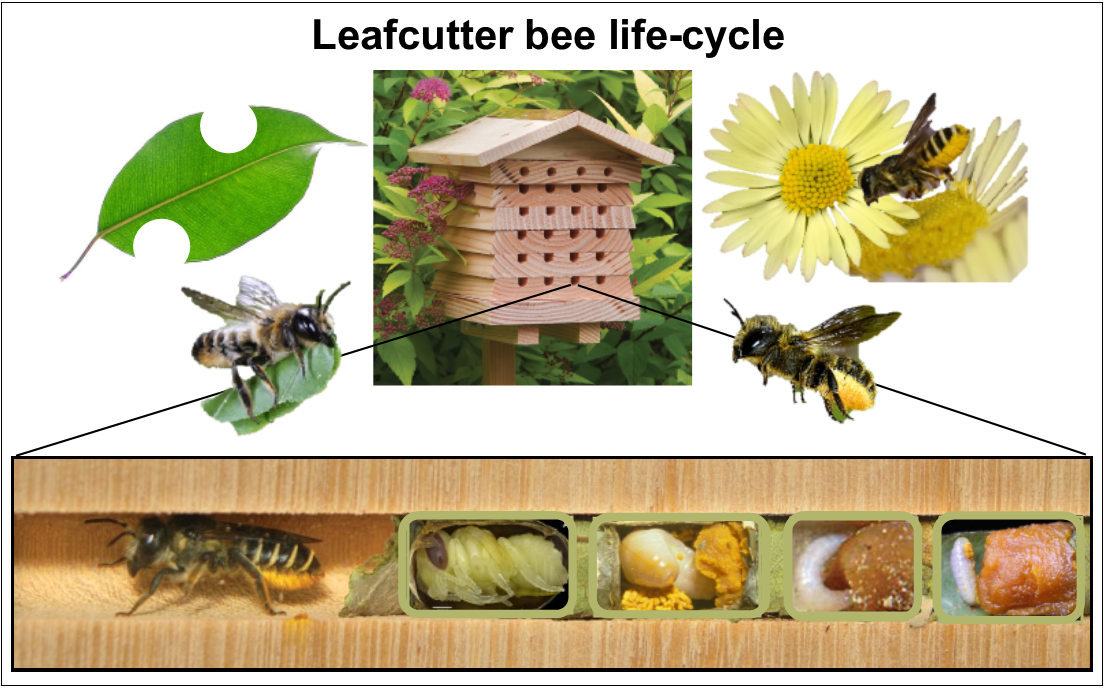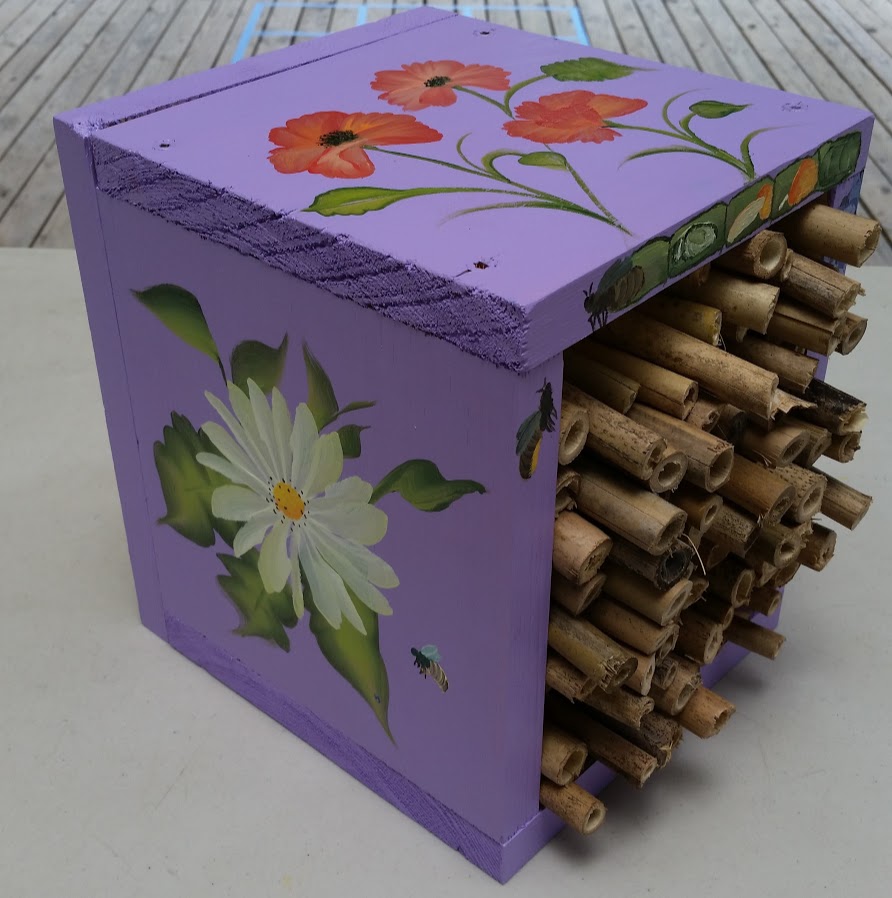North America, including the mainland U.S., is home to over 4,000 species of native bees. In contrast, only approximately 70 species (all belonging to the genus Hylaeus) are native to Hawai‘i. There are an additional 19 bee species in the islands introduced from Asia, Australia, Europe, and North America, including honey bees. While our native Hylaeus are very important pollinators of native and endemic Hawaiian plants, they are rarely encountered in agricultural areas or home gardens. Thus, when we talk about conserving bees in Hawaiian home gardens and farmlands, we are referring to habitat construction for some of the introduced bees that play an important role in pollination of crops as well as some native plants.

Unlike honey bees, which work together to construct hives of beeswax comb, nearly all of Hawai‘i’s introduced bees are solitary. Female solitary bees build nests by themselves, using materials collected from the environment such as leaves, flower petals, mud, and plant resins. They make their nests inside of hollow tunnels, such as pithy stems or holes bored by beetles. Within the nest tube, the female creates a single “cell” of leaves, mud, or plant resin, provisions it with enough pollen to support a single offspring, and then lays an egg. She repeats this process until she has filled the nest tube, at which point she seals the opening. Once the offspring have completed development and become adults, they chew their way out.
Bee hotels are artificial nesting sites that can allow observation of these gentle solitary bees in action. Because these bees forage close to their nests, providing nesting structures in your home garden will encourage nesting and pollination year after year!
Bee hotels come in many shapes and sizes. Wooden nest blocks are constructed from preservative-free lumber, firewood, or fallen logs—these simulate the beetle holes encountered in the bees’ native range. Drill holes 3–6 inches deep, ¾ inches apart, and between 3/32 inch (2.5 mm) and 3/8 inch (10 mm) in diameter. Female bees control the sex of their offspring, with eggs laid closer to the entrance hatching males. Deeper holes encourage more female offspring, which are the ones that pollinate your garden!
Stem bundles of bamboo reeds of various diameters can also serve as habitat. Cut them at the nodes, such that one end is closed and the other open. Nests should be hung or mounted securely facing east in protected areas with afternoon shade. Be creative with stem bundle designs. These are great projects for keiki!
Extravagant 5-star bee resorts may be used as focal structures in home and community gardens. These can incorporate broken and upcycled garden supplies. Because solitary bees nest communally, many species may be observed nesting within a single structure! Growing turf or other plants as a green roof on top of the structure will aid in aesthetics and prevent overheating of the nest interior.



